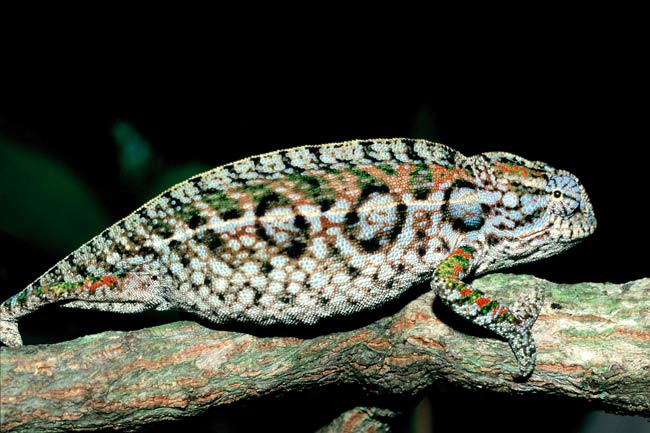World's Lizards Under Threat from Climate Change

Lizards may like to laze around in the sun, but a hotter planet is bad news for these reptiles, a new study suggests.
A major survey of lizard populations worldwide has found an alarming pattern of population extinctions attributable to rising temperatures. If current extinction trends continue, 20 percent of all lizard species could go extinct by 2080, the new study found.
The current and projected losses are directly attributed to climate warming since 1975, according to the study, which is detailed in the May 14 issue of the journal Science.
"We did a lot of work on the ground to validate the model and show that the [current] extinctions are the result of climate change," said Barry Sinervo, an ecologist and evolutionary biologist at the University of California, Santa Cruz. "None of these are due to habitat loss. These sites are not disturbed in any way, and most of them are in national parks or other protected areas."
Although the researchers' predictions for 2080 could change if humans are able to slow global climate change, it does appear that lizards have crossed a threshold for extinctions — and that their sharp decline will continue for decades at least, the researchers say.
The researchers estimate that 6 percent of lizard species will be extinct by 2050, a number they say is unlikely to change because the greenhouse gas carbon dioxide hangs around in the atmosphere for decades.
While lizards are dependent on basking in the sun to warm up, if the temperature is too hot, lizards overheat and retreat into the shade, and then they can't hunt for food, Sinervo said.
Get the world’s most fascinating discoveries delivered straight to your inbox.
Detailed surveys of 48 lizard populations from 200 different sites in Mexico from 1975 to 2009 indicate the temperature in those regions has changed too rapidly for the lizards to keep pace. Similar results showed up at other locations around the world. The research team also found that climate change is occurring too rapidly for lizards to compensate with physiological adaptations to higher body temperatures by modeling extinction risk.
"How quickly can Earth's lizards adapt to the rising global temperatures? That's the important question," Sinervo said. "We are actually seeing lowland species moving upward in elevation, slowly driving upland species extinct, and if the upland species can't evolve fast enough then they're going to continue to go extinct."
Once local populations of lizards disappear, entire species extinction is not far behind, Sinervo said.
The disappearance of lizard populations is likely to have repercussions up and down the food chain, the researchers noted. Lizards are important prey for many birds, snakes, and other animals, and they are important predators of insects.
"It's a terrible, sinking feeling – when I first saw the data, I thought, 'Can this really be happening?' It's important to point out, but it sure is depressing," said study team member Jack Sites of Brigham Young University.
The global projections are based on data on lizard body temperatures, historical data on the geographic distributions of different species, detailed past and present maximum air temperature maps, and climate projections, which assume a continuation of current trends in carbon dioxide emissions from human activities.
- How Do Lizards Cool Off?
- Images: Bizarre Frogs, Lizards and Salamanders
- Top 10 Surprising Results of Global Warming
 Live Science Plus
Live Science Plus






